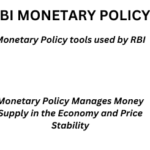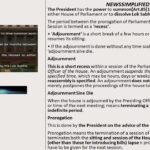Indo-US Relations: Basics Explained

During the state visit of Prime Minister Narendra Modi to United States following agreements were signed between the both countries
- The American multinational corporation General Electric (GE) and Hindustan Aeronautics Limited (HAL) will manufacture under licence in India of GE’s F414 engine for the indigenous Light Combat Aircraft (LCA) Tejas Mk2.
- U.S. semiconductor technology and chip maker Micron Technology, Inc said it would invest up to $825 million in a new chip assembly and test facility in Gujarat, which would be bolstered by investment from the Indian government and Gujarat State government totalling $2.75 billion in all.
- In space cooperation, India is signing on to a framework of (so far) 25 countries for space exploration and cooperation. The two countries have agreed on a framework for human spaceflight this year and have agreed a mission to the International Space Station in 2024.
- the U.S. is announcing a pilot program to renew visas domestically (i.e., applicants do not have to travel outside to get their renewal stamp), for certain petition-based temporary workers. This program could expand to cover H1b and L skilled visas by 2024 and to other categories eventually. It will also open two new consulates in Bengaluru and Ahmedabad. India will reopen its consulate in Seattle, and announce new consulates elsewhere.
- Deals — like purchase of MQ9-Reaper drones by General Atomics. India will buy 31 drones made by General Atomics worth slightly over $3 billion,
- India, US announced to sign the Artemis Accords, a US-led alliance seeking to facilitate international collaboration in planetary exploration and research.In a related development, ISRO will partner the NASA in sending a joint mission to the International Space Station, a permanent laboratory in space, next year.
- India was recently inducted into the Mineral Security Partnership (MSP), new initiative to bolster critical mineral supply chains, announced by the United States (US) and key partner countries in June 2022. It is also aimed at reducing dependency on China for securing critical minerals.
In February National Security Advisor Ajit Doval’s meeting with his American counterpart Jake Sullivan, when the US-India Initiative on Critical and Emerging Technologies (iCET) was operationalised; which President Joe Biden and Prime Minister Modi announced in May 2022. The initiative is looking at technologies to be shared in critical sectors such as defence, space, semiconductors, artificial intelligence, and quantum computing.
2+2 Ministerial is the highest-level institutional mechanism between
the two countries.It is a format of dialogue where the defence/foreign
ministers or secretaries meet with their counterparts from another country.
India also holds such talks with Australia, Japan and Russia.
INDO- US RELATIONS
India-U.S. bilateral relations have developed into a “global strategic partnership“(2016) which is broad-based and multi-sectoral,
covering trade and investment, defence and security, education, science and
technology, cyber security, high-technology, civil nuclear energy, space
technology and applications, clean energy, environment, agriculture and health. India and the US have reached an increasing level of strategic
convergence on bilateral, regional and global issues.
The bilateral relationship underwent a significant transformation when the US first agreed to ‘work to achieve full civil nuclear energy cooperation with India in July 2005. India was granted a waiver by the Nuclear Suppliers Group to commence civil nuclear trade. The value of trade between the two countries has touched a record $191 billion,
making the US India’s largest trading partner. In February, Air India announced the purchase of more than 200 Boeing aircraft.
A political level 2+2 dialogue has been institutionalized to oversee the host of working-level bilateral and multilateral consultations, covering everything from space and cyber cooperation to defence technology and maritime security.
The I2U2, a grouping of India, Israel, the US and the United Arab Emirates,
is focused on joint investments and new initiatives in water, energy,
transportation, space, health, and food security.
The Quad exercise between the US, Japan and India and Australia in November2020 reflects the maturity and deepening of Indo-US relations encompassing bilateral and multilateral issues.
DEFENCE RELATIONS
The defence relationship has emerged as a major pillar of the India-U.S.
strategic partnership with the signing of ‘New Framework for India-U.S. Defense Relations’ in 2005 and the resulting intensification in defence trade, joint exercises, personnel exchanges, collaboration and cooperation in maritime security and counter-piracy, and exchanges between each of the three services. The Defence Framework Agreement was updated and renewedfor another 10 years in June 2015.
The US recognition of India as a ‘Major Defence Partner in 2016, and the signing of three defence cooperation agreements between 2016 and 2019. The US is India’s second-largest source of arms after Russia with India–US defence trade increased significantly.
In recent years India purchased Super Hercules C-130J military transport planes, P8I Poseidon Long Range Maritime Patrol and Anti-Submarine aircraft, AH-64E Apache helicopters, MH-60 Romeo Seahawk helicopters.
Basic Exchange and Cooperation Agreement (BECA), along with the two agreements signed earlier — the Logistics Exchange Memorandum of Agreement (LEMOA) and the Communications Compatibility and Security Agreement (COMCASA) — completes a troika of “foundational pacts” for deep military cooperation between the two countries.
LEMOA was the first of the three pacts to be signed in August
2016. LEMOA allows the militaries of the US and India to replenish from each other’s bases, and access supplies, spare parts and services from each other’s land facilities, air bases, and ports, which can then be reimbursed.
Communications Compatibility and Security Agreement (COMCASA)
The pact, signed in September 2018 allows the US to provide India with its encrypted communications equipment and systems so that Indian and US military commanders, and the aircraft and ships of the two countries, can communicate through secure networks during times of both peace and war; it will facilitate “interoperability” between their forces — and potentially with other militaries that use US-origin systems for secure data links.
IRRITANTS
India view and support the Multipolar world order but US is more inclined to a Bilateral world view, especially in economic parlance. India and the US have had differences on WTO issues and bilateral trade, investment and IPR issues. New Delhi and Washington are also engaged in a sort of mini trade war with the previous Trump administration even referring to India
as the tariff king.
The US still has significant export controls on India (instituted after the
1998 nuclear test), which inhibits the free transfer of technology.
India’s draft Personal Data Protection law and draft e-Commerce Policy
India’s price caps on the US’ pharmaceutical imports,
Trump administration ended India’s status under the GSP, of which India was the biggest beneficiary, with Indian exports to the US accounting for “over a quarter of the goods that got duty-free access into the US in 2017.
The US administration has levied steel and aluminium tariffs, revoked India’s benefits under the Generalised System of Preferences programme, contemplated limiting Indians’ H1-B visas quota
New points of friction have arisen related to digital payments, data localisation, and e-commerce.
US-Afghan policy had affected India’s manoeuvre in its strategic
neighbourhood.
Despite years of negotiations aimed at resolving trade issues, officials do
not reach an agreement, with divisions remaining over agricultural products, tariffs, and other areas.
Increasing anti-immigrant rhetoric in US and issues of Human Rights between two nations.




0 Comments